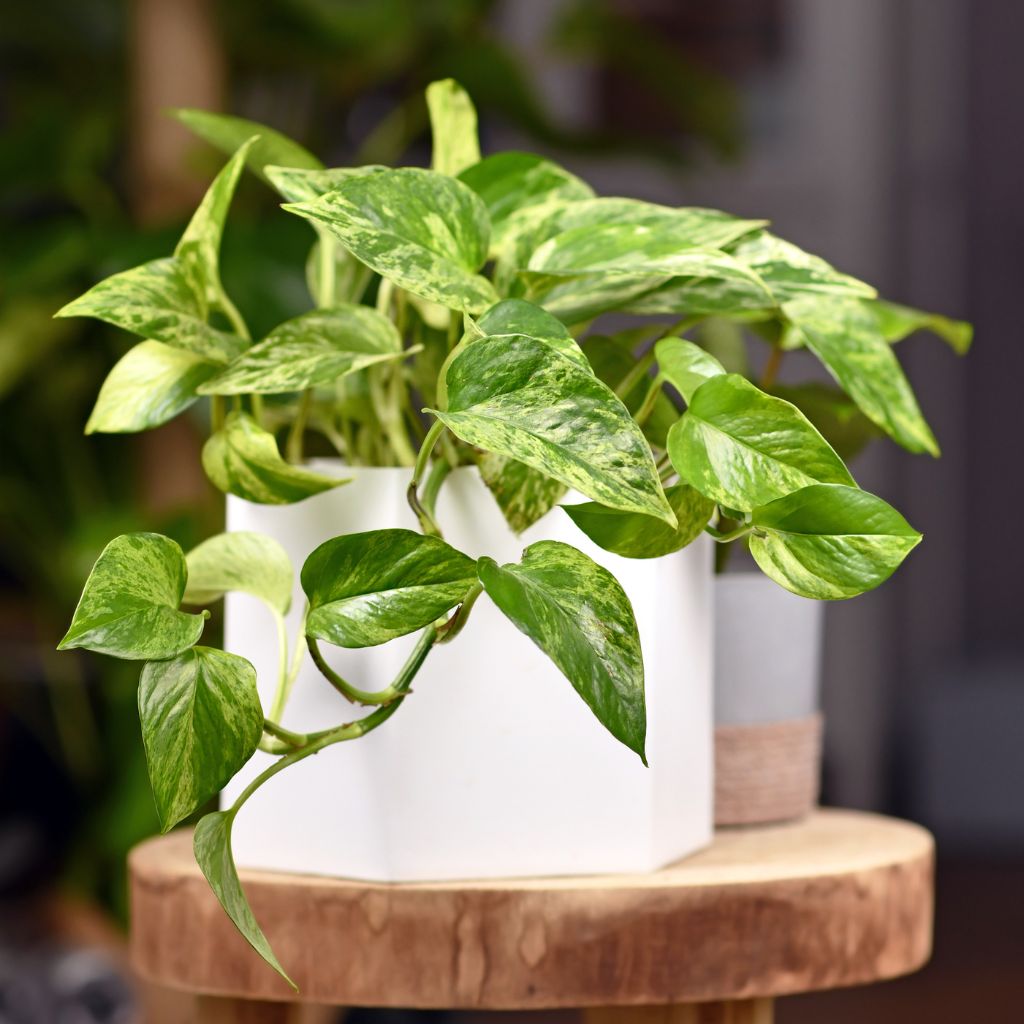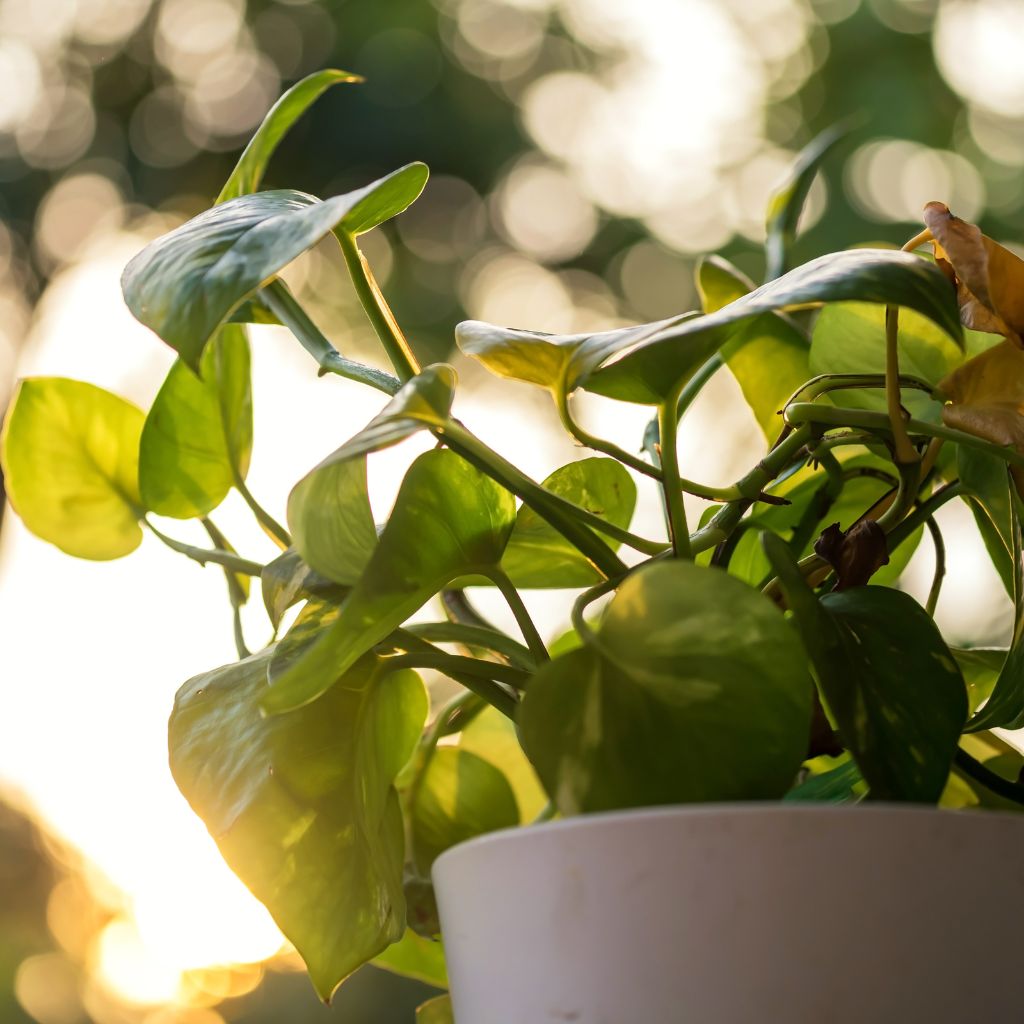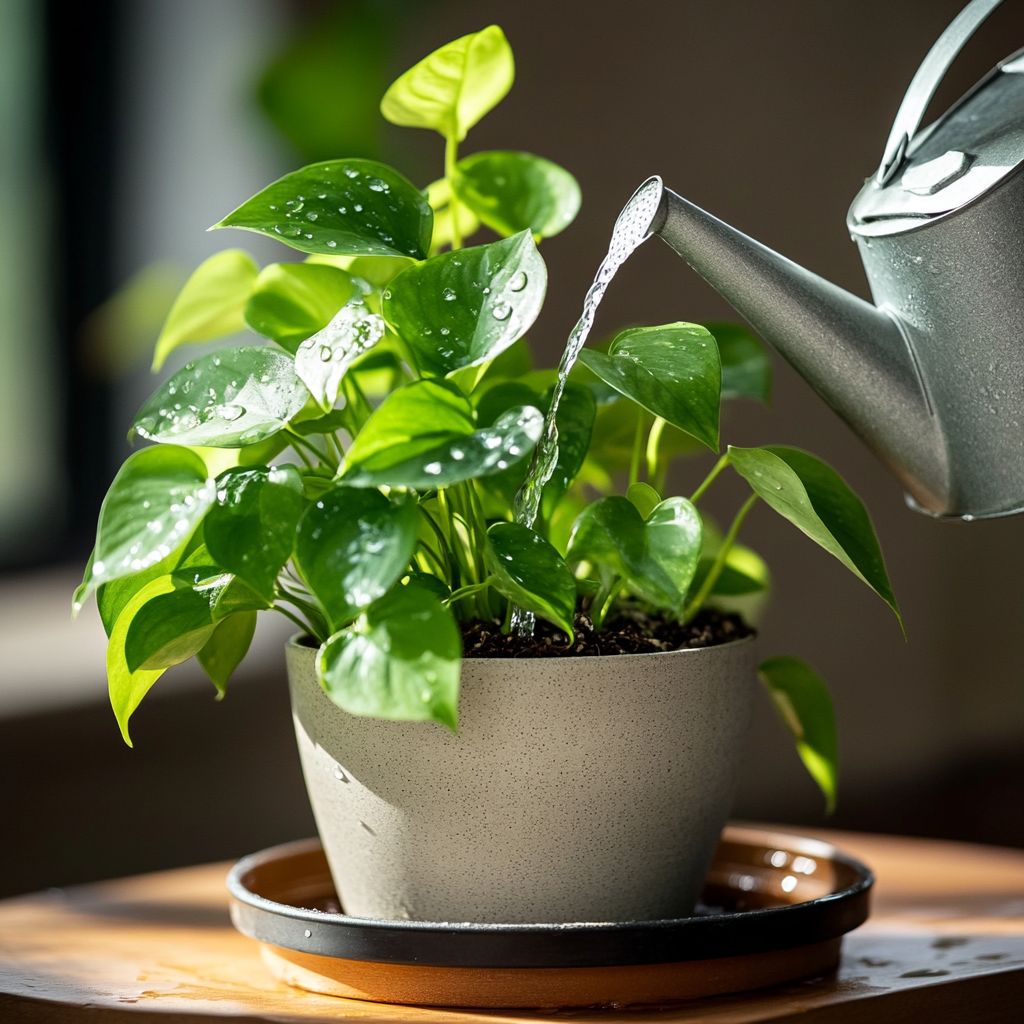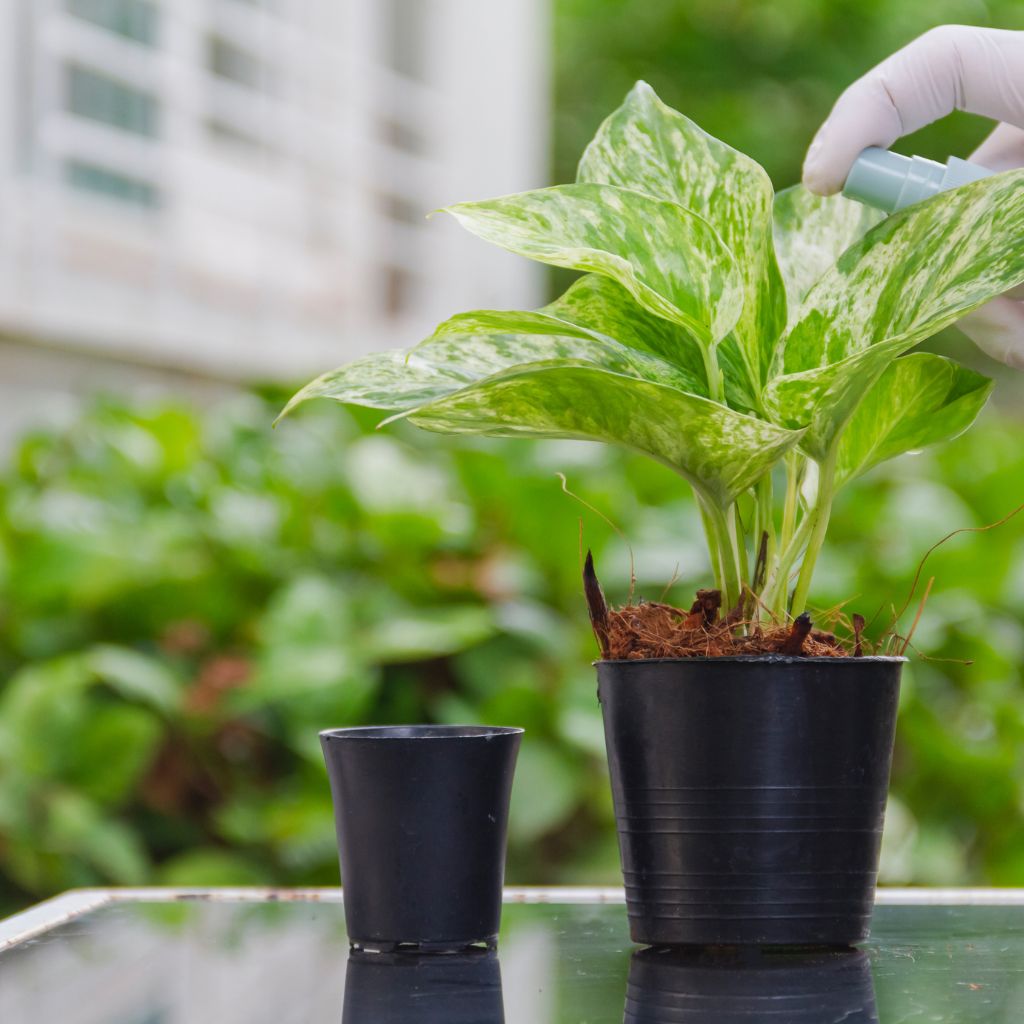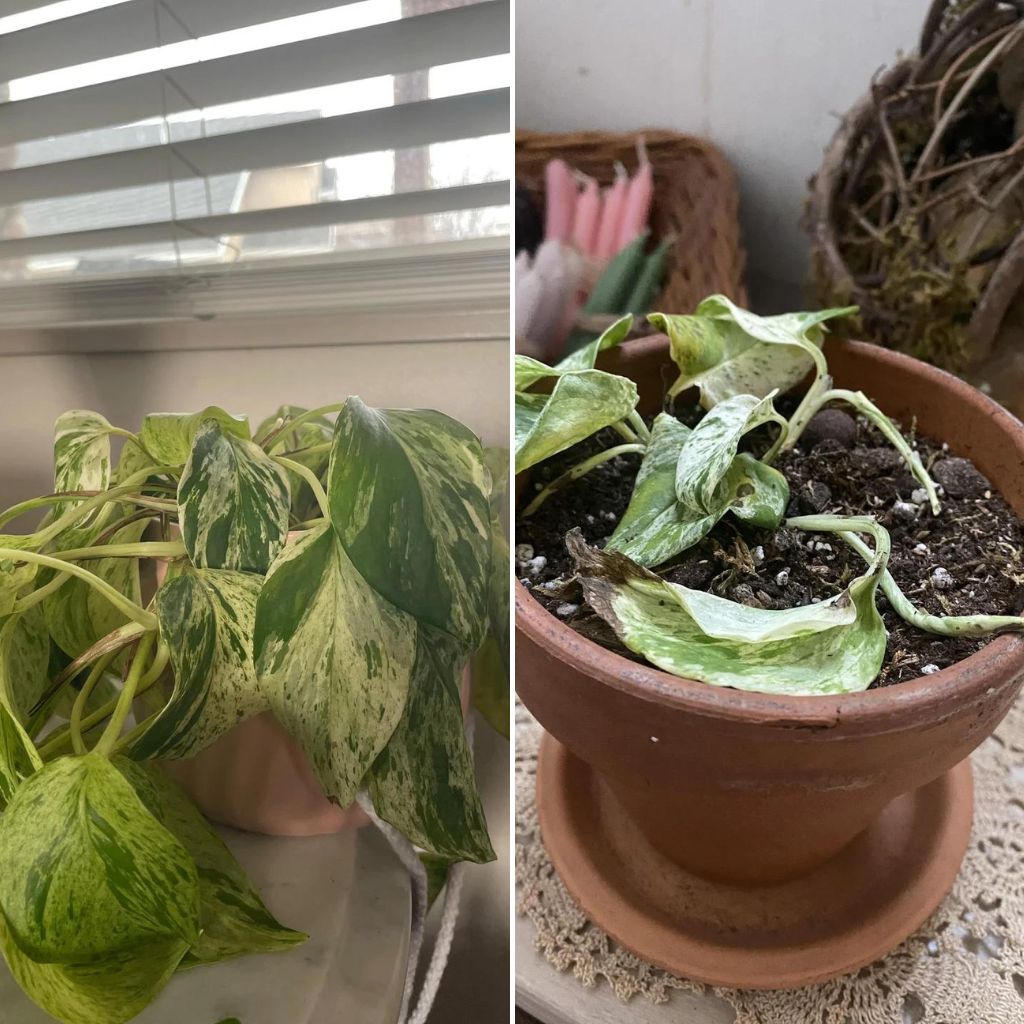Pothos, also known as Devil’s Ivy, is a beloved houseplant known for its hardiness and ease of care. With its vibrant green leaves and trailing vines, it’s no wonder that Pothos has become a staple in many households.
However, even though Pothos is relatively low-maintenance, getting the watering routine just right is key to ensuring your plant thrives.
In this guide, we’ll explore everything you need to know about the ideal watering routine for your Pothos, including factors that affect watering frequency, how to water effectively, and common mistakes to avoid.
Understanding Pothos’ Watering Needs
Pothos is a tropical plant native to Southeast Asia, where it naturally grows in humid rainforests.
In its natural habitat, Pothos experiences cycles of heavy rain followed by dry periods. This wet-dry cycle is something you’ll want to replicate in your home to keep your Pothos healthy.
The plant’s ability to withstand a range of conditions makes it forgiving to beginners, but understanding its watering needs will help you avoid issues like root rot or dehydration.
Factors Influencing Watering Frequency
The frequency with which you need to water your Pothos depends on several factors, including:
Light Levels: Pothos plants in brighter light will require more frequent watering compared to those in lower light. This is because higher light levels cause the soil to dry out faster.
Humidity: Since Pothos is a tropical plant, it prefers higher humidity levels. In drier environments, you might need to water your plant more often or consider misting to maintain moisture.
Temperature: Warmer temperatures speed up the evaporation of water from the soil, meaning your Pothos might need more frequent watering during the summer months.
Seasonal Changes: Pothos grows more actively in the spring and summer, which typically requires more water. In the fall and winter, the plant’s growth slows down, so its water needs decrease.
Soil Type: Well-draining soil is crucial for Pothos. A mix that includes perlite, peat moss, or vermiculite helps ensure that water doesn’t sit in the soil too long, reducing the risk of root rot.
Pot Size and Type: The size and material of your pot can influence how quickly the soil dries out. Terracotta pots, for instance, wick moisture away from the soil more quickly than plastic ones.
How to Check If Your Pothos Needs Water
Instead of sticking to a rigid watering schedule, it’s better to check the soil’s moisture level to determine when to water your Pothos. Here’s a simple method:
The Finger Test: Insert your finger about 1-2 inches into the soil near the base of the plant. If the soil feels dry at that depth, it’s time to water. If it’s still moist, wait a few more days before checking again.
Visual Clues: Pothos will also show signs when it needs water. Wilting or drooping leaves, especially if they feel soft, are usually indicators that your plant is thirsty. On the other hand, yellowing leaves may suggest overwatering.
How to Water Your Pothos Correctly
When it comes to watering your Pothos, the key is to water deeply but infrequently. Here’s a step-by-step guide:
Water at the Base: Water your Pothos at the base of the plant, directly onto the soil, rather than over the leaves. This ensures that the water reaches the roots where it’s needed most.
Soak Thoroughly: Water until you see water start to drip out of the drainage holes at the bottom of the pot. This thorough watering encourages deep root growth and ensures that all parts of the soil are moistened.
Drain Excess Water: After watering, make sure to empty the saucer under the pot to prevent the plant from sitting in water, which can lead to root rot.
Avoid Misting: While some people mist their Pothos to increase humidity, this practice isn’t necessary and can even lead to fungal problems. If you want to increase humidity, consider using a humidifier instead.
Seasonal Watering Adjustments
Your Pothos’ water needs will vary with the changing seasons:
Spring and Summer: During these warmer months, your Pothos will be in its active growth phase. You’ll likely need to water more frequently, possibly once a week, depending on the other factors like light and humidity.
Fall and Winter: As temperatures drop and daylight hours decrease, your Pothos will enter a dormant phase. During this time, the plant requires less water. You might find that watering every two to three weeks is sufficient.
Common Watering Mistakes and How to Avoid Them
Even though Pothos is a resilient plant, there are a few common watering mistakes that can lead to problems:
Overwatering: This is the most common mistake. Pothos prefers to dry out a bit between waterings, so overwatering can lead to root rot. Always check the soil before watering and ensure that your pot has good drainage.
Underwatering: While Pothos can tolerate some neglect, consistent underwatering can cause the plant to become stressed, leading to wilting and dry, brown leaf tips. Regularly check the soil moisture, especially during warmer months.
Using Cold Water: Pothos prefers water that is at room temperature. Cold water can shock the roots, so it’s best to let your water sit out for a bit before using it.
Watering on a Schedule: Relying solely on a set schedule without considering the current conditions can lead to problems. Always check the soil moisture first.
Ignoring Pot Size: As your Pothos grows, it may need to be repotted into a larger container. A root-bound plant in a small pot will require more frequent watering, as the soil will dry out more quickly.
Reviving an Overwatered or Underwatered Pothos
If you suspect that your Pothos has been overwatered or underwatered, there are steps you can take to revive it:
For Overwatered Pothos: Stop watering immediately and allow the soil to dry out completely. If the plant is in soggy soil, consider repotting it into fresh, well-draining soil. Trim off any yellow or mushy leaves to encourage new growth.
For Underwatered Pothos: Give your plant a thorough watering, allowing water to flow through the drainage holes. You might also mist the leaves to provide some immediate moisture, but be sure to address the root cause by adjusting your watering routine.
Mastering the ideal watering routine for your Pothos is all about balance. By understanding the plant’s natural preferences and paying attention to factors like light, temperature, and soil moisture, you can create an environment where your Pothos will thrive.
Remember to adjust your watering routine as the seasons change, and always check the soil before watering. With a little attention and care, your Pothos will reward you with lush, green vines that can brighten any space in your home.


